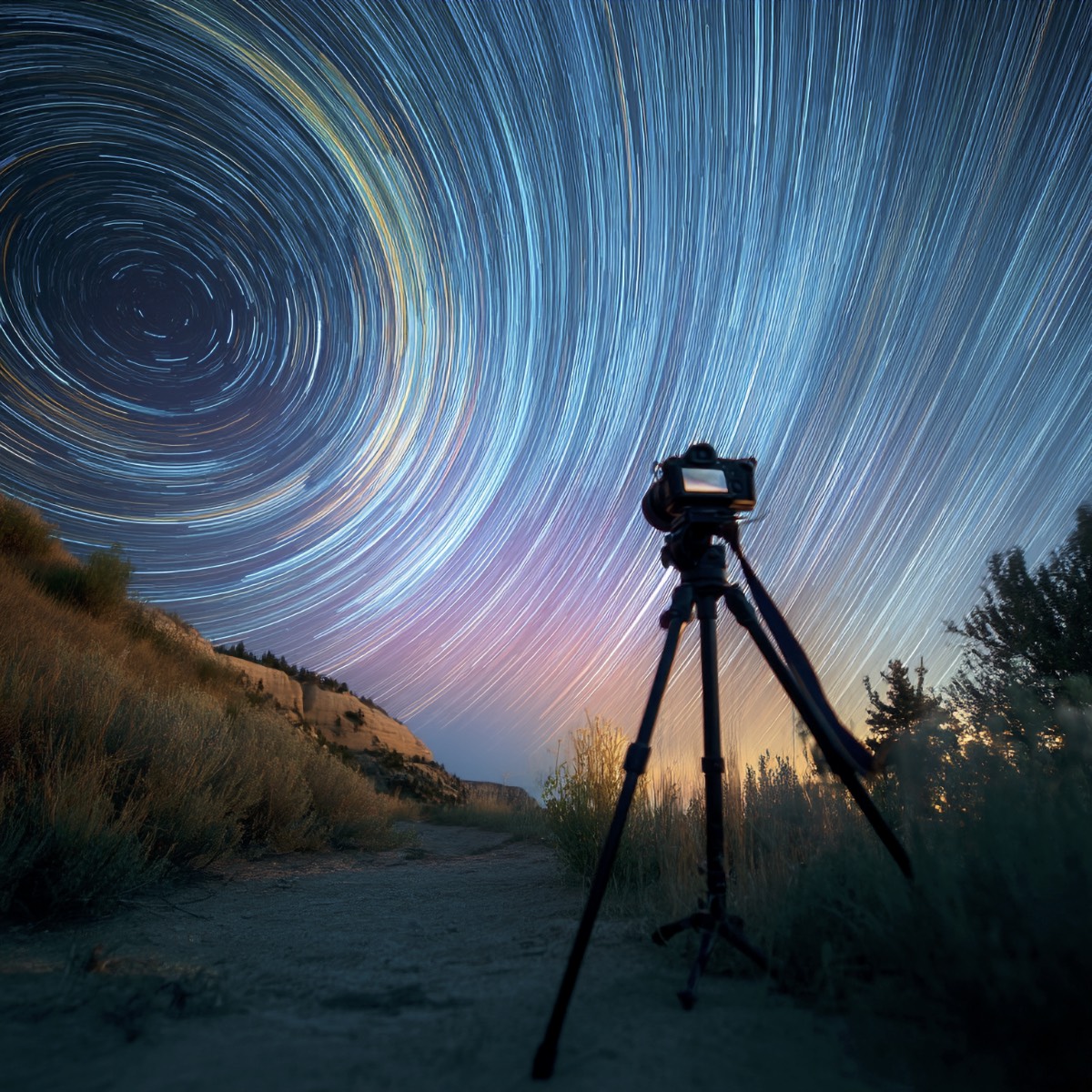Exposure Time Calculator
Calculate optimal exposure times for astrophotography to avoid star trailing while maximizing light gathering. Essential for sharp star images and perfect deep sky photography.
Equipment & Location
Exposure Time Results
Imaging Strategies
Enter your equipment details to see recommended strategies
NPF Rule Calculator
The NPF (Nicolas Pépé Frère) rule provides more accurate exposure times by considering pixel size and declination:
NPF Formula
t = (35 × aperture + 30 × pixel_size) ÷ focal_length × cos(declination)
- t = Maximum exposure time (seconds)
- aperture = Lens aperture (f-number)
- pixel_size = Physical pixel size (μm)
- focal_length = Lens focal length (mm)
- declination = Target declination (degrees)
Exposure Rules Comparison
| Rule | Formula | Best For | Accuracy |
|---|---|---|---|
| 500 Rule | 500 ÷ focal_length | Wide angle lenses, quick estimates | Basic |
| 400 Rule | 400 ÷ focal_length | More conservative, better results | Good |
| 300 Rule | 300 ÷ focal_length | Very conservative, high-res sensors | Very Good |
| NPF Rule | Complex formula considering all factors | Precise calculations, all situations | Excellent |
Target-Specific Guidelines
Milky Way Core
Declination: -29° to -22°
Best months: May - September
Recommended: 20-30s exposures, f/2.8 or faster
Andromeda Galaxy
Declination: +41°
Best months: September - February
Recommended: 30-120s with tracking
Orion Nebula
Declination: -5°
Best months: November - March
Recommended: Multiple exposures (1s to 300s)
Pleiades
Declination: +24°
Best months: October - April
Recommended: 60-300s with tracking
Exposure Optimization Tips
For Untracked Photography
- Use the widest aperture available (f/1.4 - f/2.8)
- Start with ISO 1600-3200, adjust based on noise levels
- Focus on bright stars using live view at 10x zoom
- Take multiple shots and stack to reduce noise
- Consider foreground lighting for landscape astrophotography
For Tracked Photography
- Can use longer exposures (2-10 minutes typical)
- Lower ISO (400-1600) for better signal-to-noise ratio
- Take dark frames at same temperature and exposure time
- Consider autoguiding for exposures longer than 30 seconds
- Plan for dithering between exposures to improve final image
